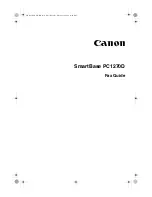
8
Changing Needle
Raise the needle by turning the handwheel toward
you, then lower the presser foot.
Loosen the needle clamp screw by turning it
counterclockwise.
Remove the needle from the clamp.
Insert the new needle into the needle clamp with
the flat side away from you.
When inserting the needle into the clamp, push it
up as far as it will go and tighten the clamp screw
firmly with the screwdriver.
To check the needle
Place the flat side of the needle on something flat
(needle plate, glass etc.). The clearance between
the needle and flat surface should be consistent.
Never use a bent or blunt needle.
Thread and Needle Chart
Fabric
Thread
Needle
Fine
Lawn
Georgette
Tricot
Organza
Crepe
Silk #80-100
Cotton #80-100
Synthetic #80-100
#9/65-11/75
Blue tip needle
Medium
Sheeting
Jersey
Broadcloth
Fleece
Silk #50
Cotton #50-80
Synthetic #50-80
#11/75-14/90
Heavy
weight
Denim
Tweed
Coating
Quilting
Silk #30-50
Cotton #40-50
Synthetic #40-50
#14/90-16/100
• For general sewing, use needle size 11/75
or 14/90.
• A fine thread and needle should be used
for sewing lightweight fabrics, so the fabric
will not be marred.
• Heavy fabrics require a needle large
enough to pierce the fabric without fraying
the needle thread.
• Always test the needle size on a small
scrap of the fabric that will be used for
actual sewing.
• In general, use the same thread for the
needle and bobbin.
• When sewing stretch fabrics, very fine
fabrics and synthetics, use a blue tip
needle. The blue tip needle effectively
prevents skipped stitches.
NOTE:
1 x blue tip needles (#11/75), 2 x #11/75 needles and 2
x #14/90 needles are included in the needle case (Part
No. 540401026).
Summary of Contents for HD523
Page 1: ...INSTRUCTION MANUAL...
Page 2: ......
Page 34: ...32 This page is left intentionally blank...
Page 35: ......
Page 36: ...312 XXX XXX PL...











































